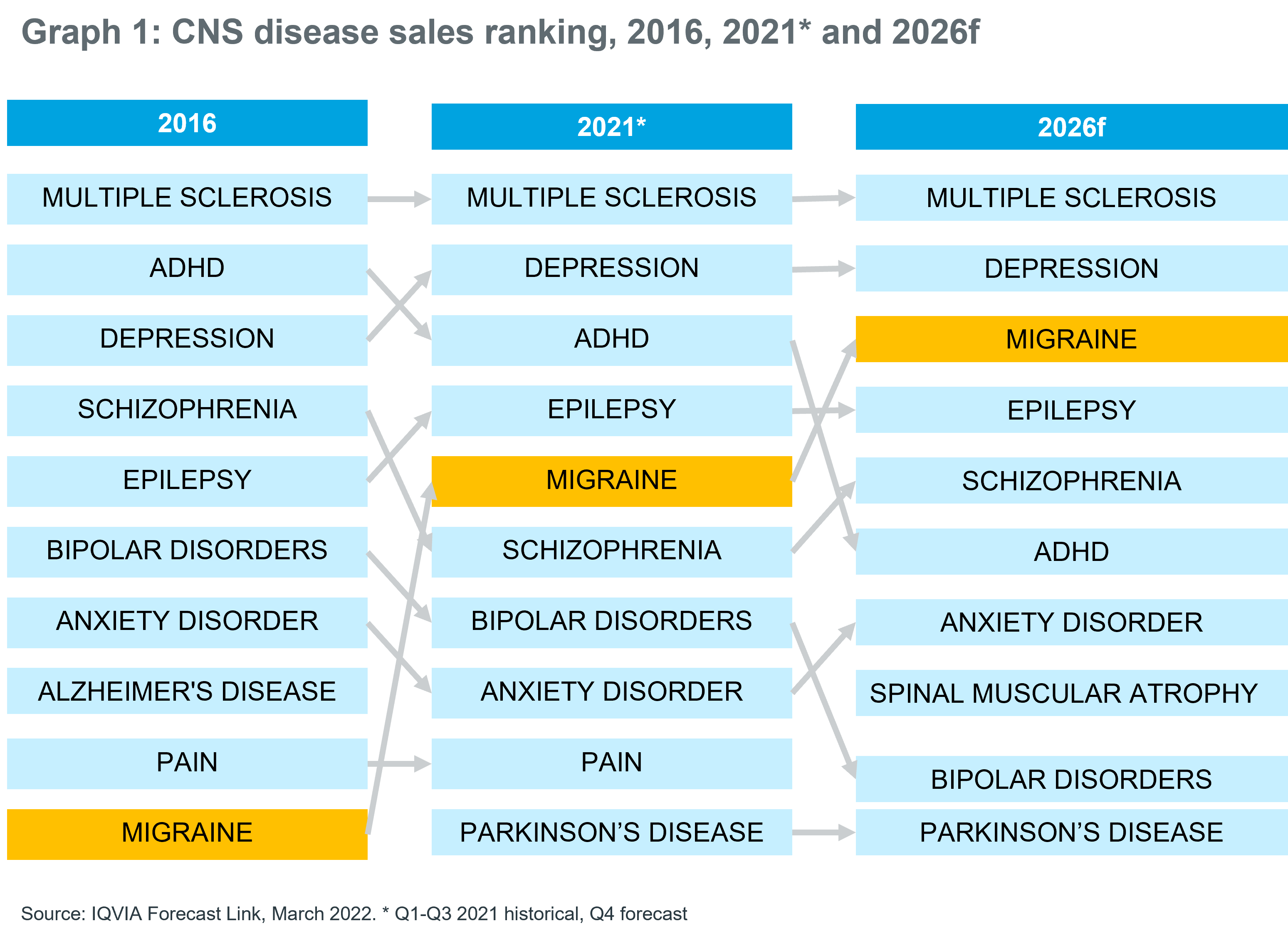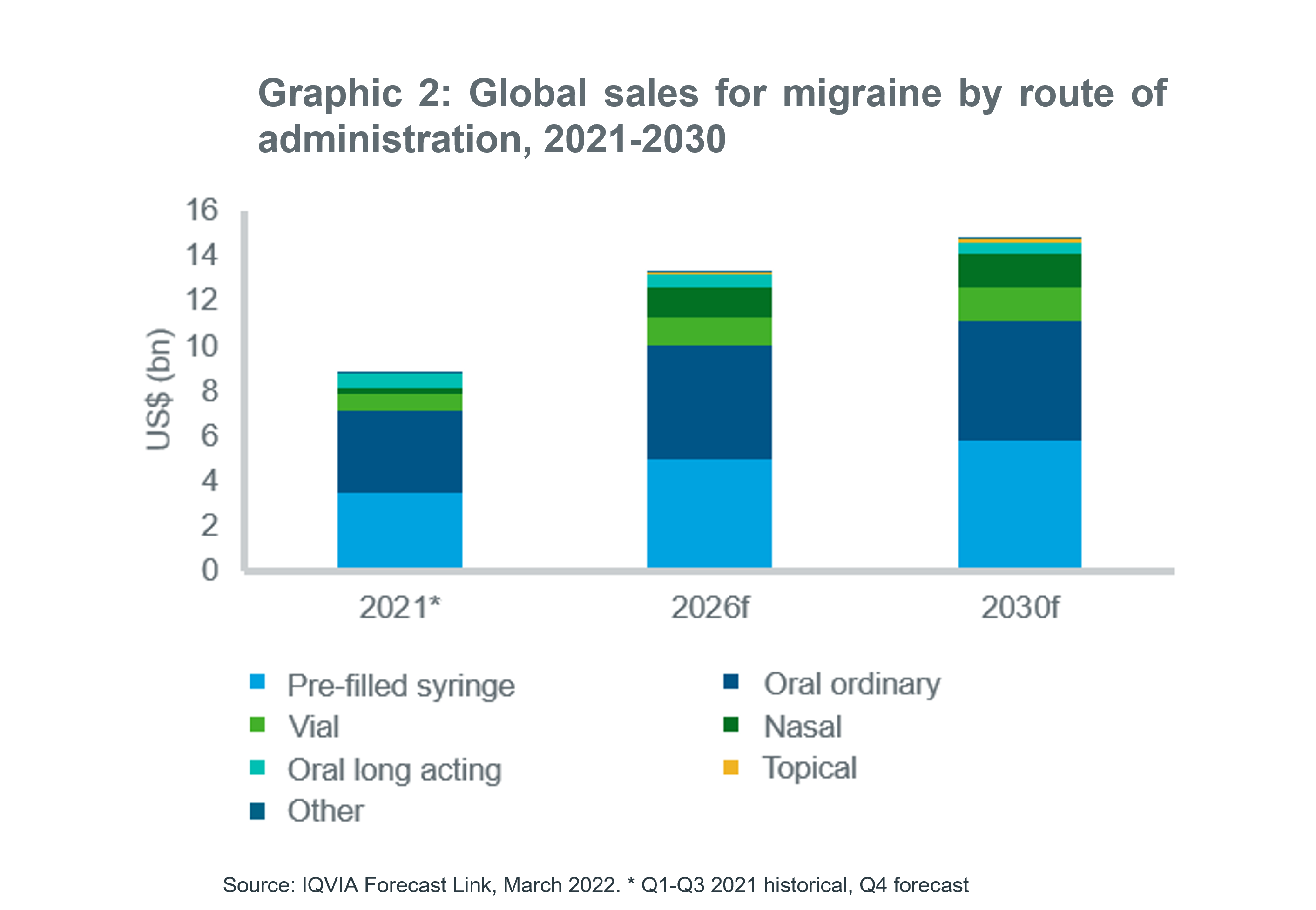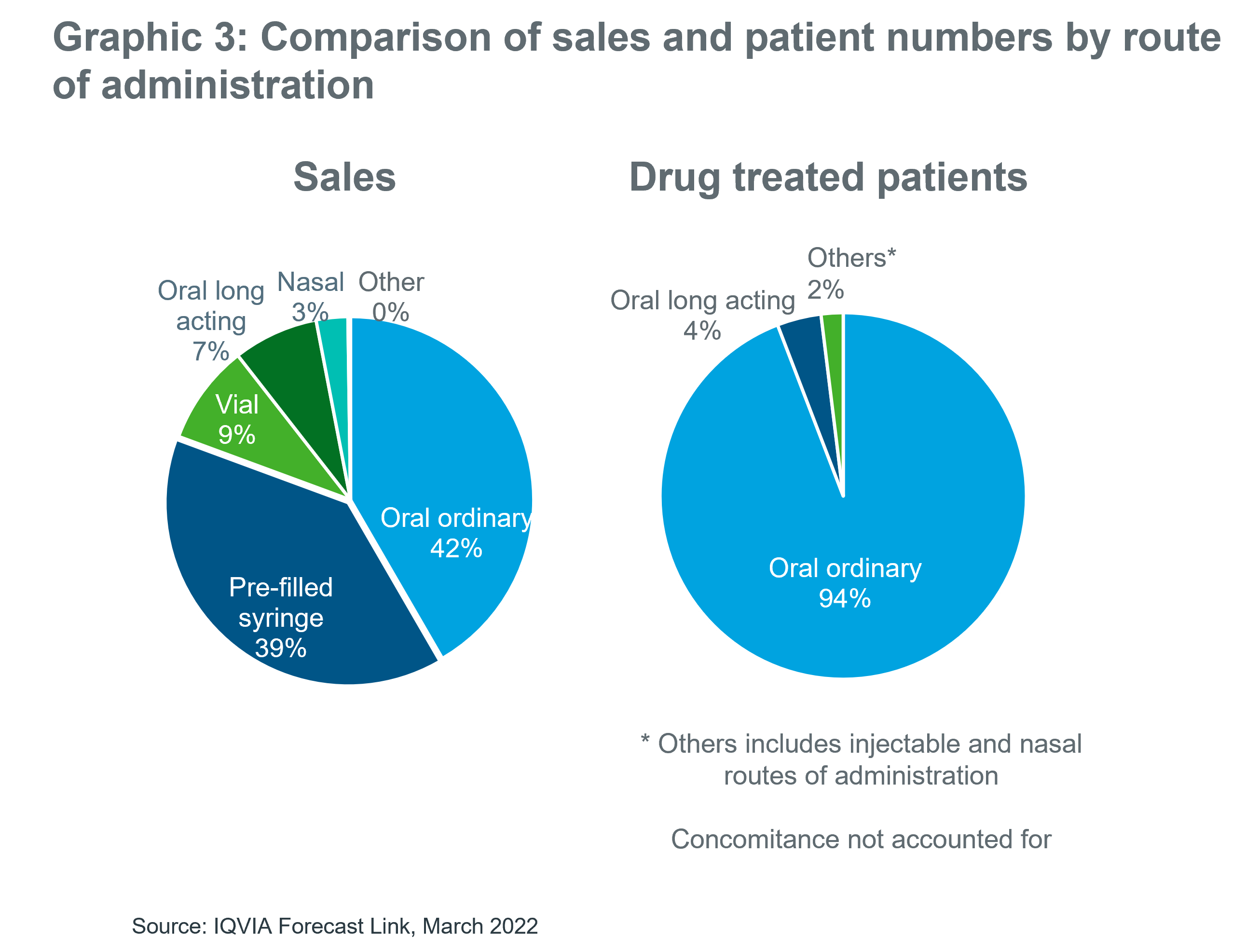





















- Blogs
- Migraine market continues exponential growth
The launch and continued strong uptake of biologic calcitonin gene-related peptide (CGRP) monoclonal antibodies for the preventative treatment of migraine in 2019 has transformed the sales outlook for this disease. However, additional flexibility in route of administration for this mechanism has created new pipeline treatments and opens a new commercial avenue for use in both prevention and acute migraine attacks for existing and novel migraine treatments. Alongside the continued uptake of injectable biologics, this drives the high projected growth in sales for this disease over the next 10 years, and positions migraine as the 3rd highest selling disease in the CNS disease area by 2026.
Migraine is a neurological disease that causes a variety of symptoms, such as throbbing, pulsing headache, nausea, and sensitivity to light, sound, and activity. It may last at least four hours but can also persist for days for some sufferers1. According to the 2019 Global Burden of Disease study, migraine continues to be the second highest cause of global disability, and is first among young women 2. Migraine has a wide global distribution: it can be found in all continents, but with a prevalence that varies across geographic regions, higher in North, South America and Europe, intermediate in Asia, and lowest in Africa 3.
There is no complete cure for migraine since its pathophysiology has yet to be fully understood. Historically, there have been two ways to approach the treatment of migraine headache4:
- relieve the symptoms during the attacks
- prevent the attacks, including non-pharmacological interventions
Prior to 2019 most pharmacological interventions treated the symptoms of an attack at the point of onset, and global sales for this disease were estimated at $2.2bn (IQVIA Forecast Link). A proportion of suffers experience aura as a warning of migraine, so treatment can be taken in a timely manner, although treatment generally consisted of pain relief, triptans or opioids, with little else available if these methods did not provide relief.
However, the launch of calcitonin gene-related peptide (CGRP) monoclonal antibodies in 2019 as preventative treatments has changed the treatment landscape for severe migraine suffers. These treatments are the first to be designed to act on the trigeminal pain system and are considered to be more specific with little or no adverse effects 5. These expensive biologic treatments have also catapulted migraine to the 5th highest sales disease in CNS, with IQVIA Forecast Link forecasts predicting a move to third place by 2026, with global sales of $13.2bn

More recent innovation includes the use of the CGRP mechanism in different delivery forms, specifically nasal delivery which provides a quick entry to the blood stream. This mechanism of action can act as both a preventative and acute treatment. Nasal delivery is not new to the migraine market, with products like nasal triptan treatments readily available for migraine suffers, but flexibility in the route of administration methods for this mechanism has created new pipeline treatments and opens a new commercial avenue for existing and novel migraine treatments. Alongside the continued uptake of injectable biologics, this drives the high projected growth in sales for this disease over the next 10 years.

There are several orally available CGRP inhibitors already on the market (known as gepants), but few for the prevention of migraine. Currently there is only one orally available gepant with both an acute label, and an expanded prevention label. Recently launched atogepant An orally available CGRP inhibitor was approved just for preventative treatment of episodic migraine. This preventative indication means a long-term course of treatment, rather than a short-term acute treatment , opening a much larger sales opportunity.
Novel pipeline candidate zavegepant, is looking to be used in both patient groups of prevention and acute treatment, a sure way to maximize commercial opportunities.
Other treatments in the pipeline also focus on new formulations and routes of administration, but it is the acute and preventative label that will provide the commercial opportunity in this crowded market.
A comparison of sales verses drug-treated patient numbers from IQVIA’s Forecast Link and Patient Link shows the huge number of patients receiving small molecule, likely acute, generic, inexpensive treatments. Sales however are driven more by the injectable biologic treatments which by IQVIA’s Patient Link calculations are, globally, only used in 2% of drug-treated migraine patients.

- https://my.clevelandclinic.org/health/diseases/5005-migraine-headaches
- Steiner et al., 2020 https://thejournalofheadacheandpain.biomedcentral.com/articles/10.1186/s10194-020-01208-0
- Vigano et al., 2019 https://www.ncbi.nlm.nih.gov/pmc/articles/PMC6519367/
- https://www.ninds.nih.gov/Disorders/All-Disorders/Migraine-Information-Page
- Edvinsson, 2019 https://pubmed.ncbi.nlm.nih.gov/30725283/
IQVIA Forecast Link provides regularly updated and fully segmentable sales and volume forecasts across 10,000 products, 600 diseases and 73 countries. Gain insights into current and future market landscapes and power your strategic decision making via this single easy-to-use platform providing unrivalled breadth of coverage.
To learn more, please view the Forecast Link video at https://www.iqvia.com/library/videos/iqvia-forecast-link





